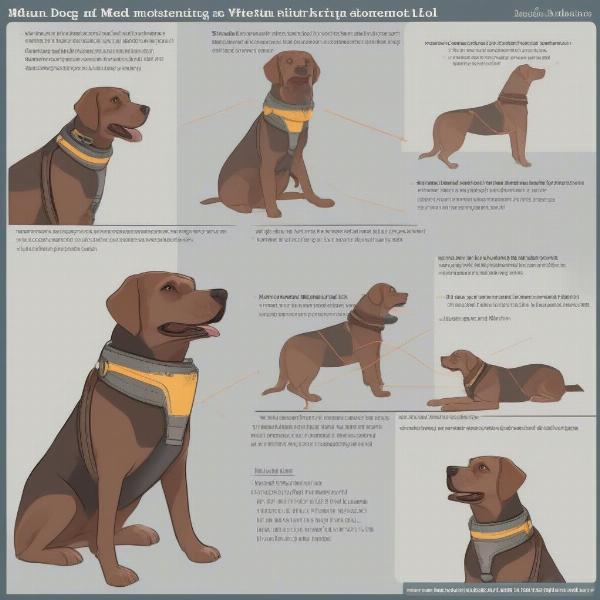Shock collars, also known as e-collars or training collars, are a controversial tool used in dog training, particularly for medium-sized breeds. Understanding the implications, proper usage, and ethical considerations surrounding shock collars is crucial for any dog owner considering this method. This guide will explore the pros and cons, offer alternatives, and equip you with the knowledge to make an informed decision about whether a shock collar is right for your medium-sized companion.
Types of Shock Collars for Medium Dogs
Shock collars for medium dogs vary in features and functionality. Some deliver a static correction, while others offer vibration or tone-only modes. Understanding the differences is key to choosing the right type for your dog’s temperament and training needs. Remote-controlled collars allow for precise timing and control, while those triggered by barking can be helpful for addressing excessive vocalization. Some collars even combine multiple functions.
Are Shock Collars Safe for Medium Dogs?
 Safety Considerations for Shock Collars on Medium Dogs
Safety Considerations for Shock Collars on Medium Dogs
The safety of shock collars is hotly debated. Used incorrectly, they can cause physical and psychological harm. Proper fit is essential to prevent injury, and the intensity should always be the lowest effective level. It’s vital to consult with a certified professional dog trainer to ensure safe and humane usage. Misuse can lead to burns, fear, and aggression.
Training with a Shock Collar: Dos and Don’ts
When using a shock collar, positive reinforcement is paramount. The collar should never be used to punish, but rather as a tool to interrupt unwanted behaviors. Pair the correction with a verbal command, and always reward desired actions. Consistency and timing are crucial for effective training. Never use the collar on a fearful or anxious dog.
Alternatives to Shock Collars for Medium Dogs
Many effective training methods don’t involve shock collars. Positive reinforcement techniques, using treats and praise, are often highly successful. dog collars for barking prevention like citronella collars can deter barking without causing pain. Clicker training and other reward-based methods build a strong bond between you and your dog while addressing behavioral issues humanely.
Choosing the Right Shock Collar for Your Medium Dog
Consider your dog’s size, breed, and temperament when choosing a shock collar. Adjustable intensity levels are crucial, allowing you to customize the correction to your dog’s sensitivity. Look for collars with multiple modes, such as vibration and tone, to provide options beyond static correction.
Addressing Common Concerns About Shock Collars
Many dog owners are understandably concerned about the potential negative effects of shock collars. It’s important to address these concerns head-on and understand the ethical implications. Open communication with a veterinarian or certified dog trainer can help alleviate anxieties and ensure responsible use.
When to Consult a Professional
If you’re unsure whether a shock collar is right for your medium-sized dog, consult a professional dog trainer or veterinarian. They can assess your dog’s individual needs and recommend the most appropriate training approach. vibrating collar dog might be a suitable alternative.
Conclusion
Shock collars for medium dogs can be a training tool, but their use requires careful consideration, proper training, and ethical responsibility. Always prioritize your dog’s well-being and explore alternative training methods before resorting to a shock collar. With the right approach and guidance, you can effectively address behavioral issues while maintaining a positive and loving relationship with your canine companion.
FAQ
- Are shock collars cruel? Used improperly, they can be. Proper use, under the guidance of a professional, can minimize the risk of harm.
- Can shock collars cause aggression? Misuse can potentially increase aggression. Proper training and positive reinforcement are essential.
- What’s the difference between a shock collar and a training collar? The terms are often used interchangeably. “Training collar” can encompass a wider range of devices, including vibration and tone-only options.
- How do I choose the right shock collar for my medium-sized dog? Consider your dog’s size, breed, and temperament. Consult with a professional for personalized recommendations.
- Are there alternatives to shock collars? Yes, many! Positive reinforcement, clicker training, and citronella collars are just a few examples.
- When should I consult a professional trainer? If you’re unsure about using a shock collar, or if you’re having difficulty training your dog, consult a professional.
- Can I use a shock collar on a puppy? It’s generally not recommended to use shock collars on puppies.